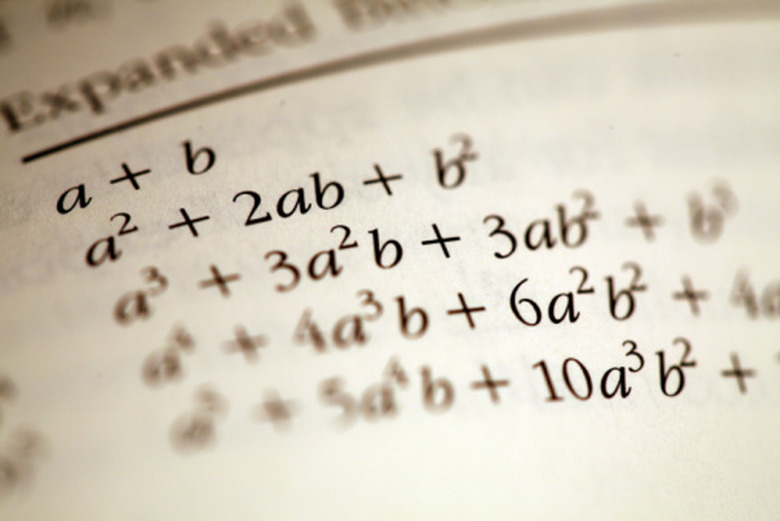Types Of Algebra Equations
There are five main types of algebraic equations, distinguished by the position of variables, the types of operators and functions used, and the behavior of their graphs. Each type of equation has a different expected input and produces an output with a different interpretation. The differences and similarities between the five types of algebraic equations and their uses demonstrate the variety and power of algebraic operations.
Monomial/Polynomial Equations
Monomial/Polynomial Equations
Monomials and polynomials are equations consisting of variable terms with whole number exponents. Polynomials are classified by the number of terms in the expression: Monomials have one term, binomials have two terms, trinomials have three terms. Any expression with more than one term is called a polynomial. Polynomials are also classified by degree, which is the number of the highest exponent in the expression. Polynomials with degrees one, two and three are called linear, quadratic and cubic polynomials, respectively. The equation x^2 – x – 3 is called a quadratic trinomial. Quadratic equations are commonly encountered in algebra I and II; their graph, known as a parabola, describes the arc traced by a projectile fired into the air.
Exponential Equations
Exponential Equations
Exponential equations are distinguished from polynomials in that they have variable terms in the exponents. An example of an exponential equation is y = 3^(x – 4) + 6. Exponential functions are classified as exponential growth if the independent variable has a positive coefficient and exponential decay if it has a negative coefficient. Exponential growth equations are used to describe the spread of populations and diseases as well as financial concepts such as compound interest (the formula for compound interest is Pe^(rt), where P is the principal, r is the interest rate and t is the amount of time). Exponential decay equations describe phenomena such as radioactive decay.
Logarithmic Equations
Logarithmic Equations
Logarithmic functions are the inverse of exponential functions. For the equation y = 2^x, the inverse function is y = log2 x. The log base b of a number x is equal to the exponent that you have to raise b to to get the number x. For example, the log2 of 16 is 4 because 2 to the 4th power is 16. The transcendental number "e" is most commonly used as the logarithmic base; the logarithm base e is frequently called the natural logarithm. Logarithmic equations are used in many types of intensity scales, such as the Richter scale for earthquakes and the decibel scale for sound intensity. The decibel scale uses a log base 10, meaning an increase of one decibel corresponds to a tenfold increase in sound intensity.
Rational Equations
Rational Equations
Rational equations are algebraic equations of the form p(x) / q(x), where p(x) and q(x) are both polynomials. An example of a rational equation is (x – 4) / (x^2 – 5x + 4). Rational equations are notable for having asymptotes, which are values of y and x that the graph of the equation approaches but never reaches. A vertical asymptote of a rational equation is an x-value that the graph never reaches — the y-value either goes to positive or negative infinity as the value of x approaches the asymptote. A horizontal asymptote is a y-value that the graph approaches as x goes to positive or negative infinity.
Trigonometric Equations
Trigonometric Equations
Trigonometric equations contain the trigonometric functions sin, cos, tan, sec, csc and cot. Trigonometric functions describe the ratio between two sides of a right triangle, taking the angle measure as the input or independent variable and the ratio as the output or dependent variable. For example, y = sin x describes the ratio of a right triangle's opposite side to its hypotenuse for an angle of measure x. Trigonometric functions are distinct in that they are periodic, meaning the graph repeats after a certain amount of time. The graph of a standard sine wave has a period of 360 degrees.
References
Cite This Article
MLA
Wallulis, Karl. "Types Of Algebra Equations" sciencing.com, https://www.sciencing.com/types-algebra-equations-8322912/. 24 April 2017.
APA
Wallulis, Karl. (2017, April 24). Types Of Algebra Equations. sciencing.com. Retrieved from https://www.sciencing.com/types-algebra-equations-8322912/
Chicago
Wallulis, Karl. Types Of Algebra Equations last modified August 30, 2022. https://www.sciencing.com/types-algebra-equations-8322912/
